November is often called the month of contrast due to its dreary skies, colorful landscape, and active fall animals. It’s a time of year when everything changes from that crisp autumn sky to a cold winter wonderland, depending on location. That being said, you can still discover the most active animals in November.
Just because the landscape changes doesn’t mean all animals are tucking themselves away for the winter. In fact, many mammals are the most active during this month as they prepare for the oncoming winter. So, don’t be too surprised to find that many types of animals are still enjoying the bright golden and red leaves during fall.
#1 Red Squirrel

Red squirrels can be found roaming around collecting food for the winter.
©Saeedatun/Shutterstock.com
The red squirrel (Sciurus vulgaris) is often one of the most active mammals during fall months. It becomes active once the leaves change color on the trees and begin scavenging for food to stockpile for winter. They will collect seeds, cones, bird eggs, berries, fruit, and nuts. Essentially, high-caloric foods that can keep them satiated during the winter. Aside from collecting food, the red squirrel also feeds as it needs to put on weight to stay warm for winter.
#2 Hedgehog
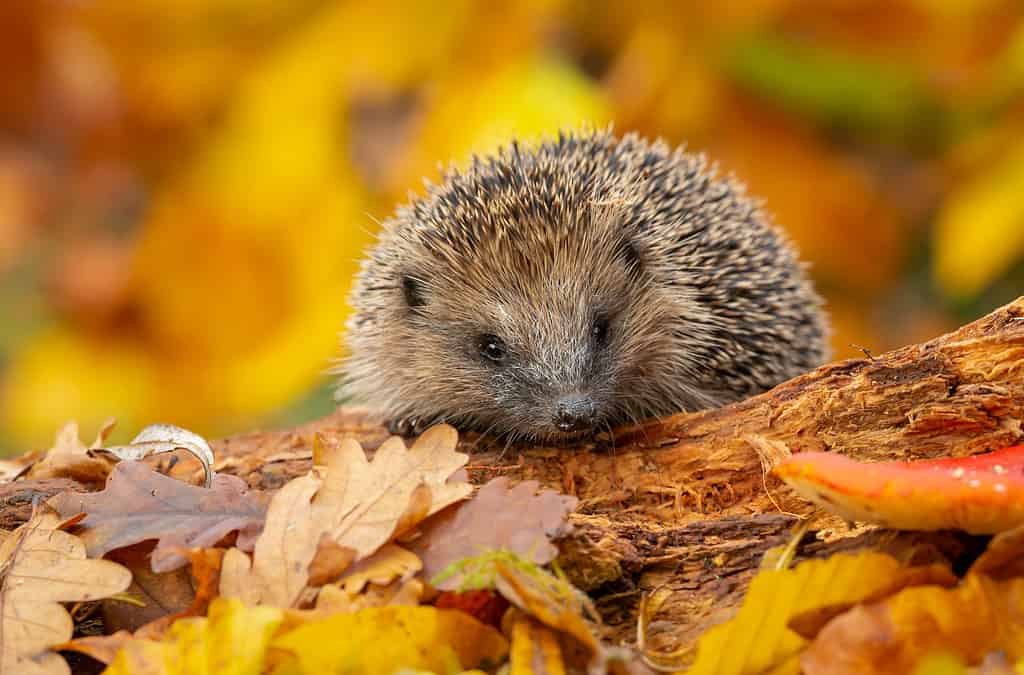
While more challenging to spot, the
hedgehog
spends its fall days eating as much food as possible to gain weight for the winter.
©Anne Coatesy/iStock via Getty Images
Another one of the most active animals in November is the hedgehog (Erinaceinae). Similar to the red squirrel, the hedgehog prepares itself for the upcoming winter months. It works to fatten itself up so that it can sleep throughout winter.
Despite the species being inactive most other times of the year, during the fall, it tries to gather and eat as much as possible. Favorite foods of the hedgehog include beetles, caterpillars, and earthworms. However, it’s no stranger to consuming any food left outside and loves to invade gardens.
#3 Fox
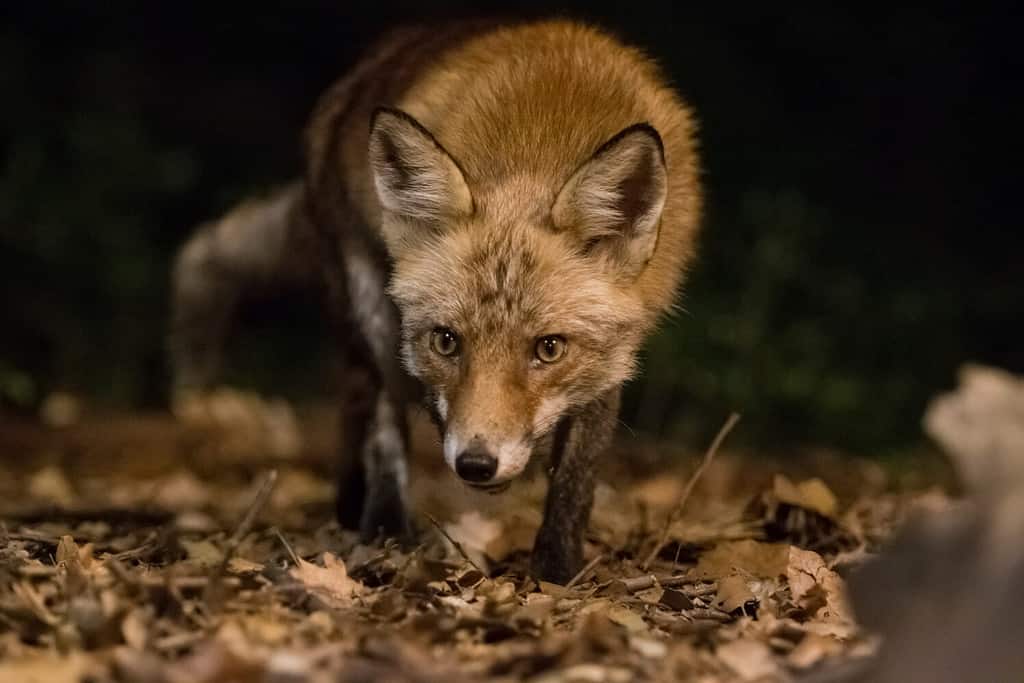
Red foxes, in particular, are the most active during November.
©Daniel Rodriguez Garriga/Shutterstock.com
Foxes are some of the most active animals during November due to specific behavioral patterns. During the autumn months, young red foxes are often venturing out of their own territories to find their own. Fall marks an important time for young foxes, as they want to separate from their siblings and parents.
#4 Great Spotted Woodpecker
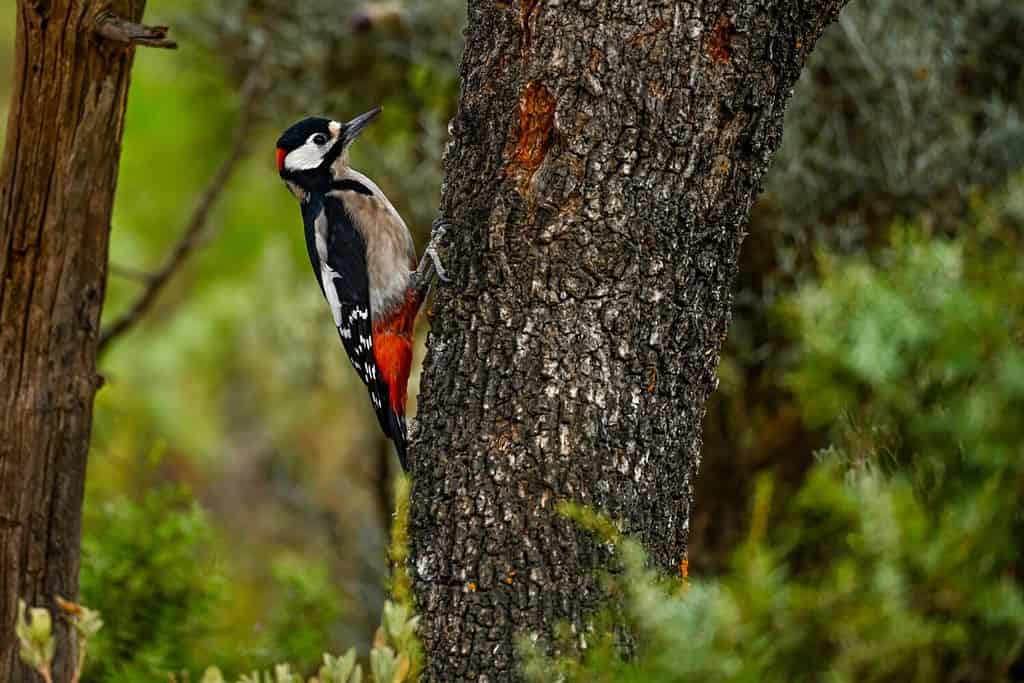
Woodpeckers are often the most active in fall and spring.
©Agorca/Shutterstock.com
Another example of one of the most active animals in November is the great spotted woodpecker (Dendrocopos major). These birds are most active in spring and fall as they prepare nests, roost, and establish territories. During November, the sound of a Great spotted woodpecker drumming against trees is often expected.
They either are pecking against wood surfaces to find insects or are excavating nests and building roost cavities. In addition, female and male woodpeckers will drum to help attract a mate.
#5 Monarch Butterfly

Like birds, insects such as the
monarch butterfly
migrate when it gets cold.
©Dotted Yeti/Shutterstock.com
Monarch butterflies (Danaus plexippus) are another example of one of the most active animals in November. They often can’t tolerate cold temperatures and tend to migrate to much warmer regions. During this time, they can be seen flying at the beginning of autumn to other areas with warmer climates and livable conditions.
#6 Dormouse
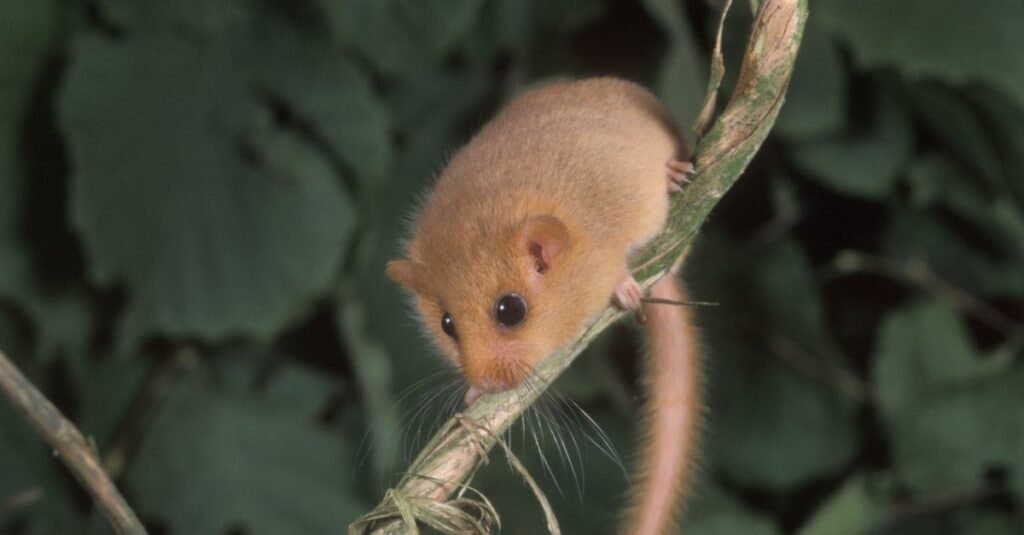
Fall is the last active month for the
dormouse
before it hibernates for the winter.
©iStock.com/MikeLane45
The dormouse (Gliridae) is another small critter that gets ready to hibernate for the winter during the fall. In November, the Dormouse collects hazelnuts, berries, and other caloric foods to help put on fat during the winter.
Once winter hits, the body temperature drops, its heart rate and breathing reduce by 90%, and it hibernates for up to six months. During this time, it relies on its body fat for nutrition, which is why it’s often scavenging and eating during November.
#7 Red Deer

Once fall hits, red deer become active for mating season.
©Smudge 9000 (https://www.flickr.com/people/smudge9000/), CC BY 2.0, via Wikimedia Commons – License
The red deer (Cervus elaphus) is active during November, mainly for mating season. Deer species tend to mate between October and December. During this time, the male deer will begin a “rut” and search for a mate. This means the male deer will become more active and move around more often.
#8 Grey Wolf

In northern regions, grey wolves prepare for the winter by hunting in packs.
©Jim Cumming/Shutterstock.com
The grey wolf (Canis lupus) will become extra active during the fall months as they hunt to put on extra fat reserves for the harsh winters. Many other animals tend to hibernate during winter, which makes it difficult for the grey wolf to feed.
So, the wolves will often take advantage of the November month to catch other active animals during this time. Since wolves are carnivores, they hunt deer, elk, bison, moose, and other small rodents such as beavers and hares.
#9 Badger

While the badger doesn’t hibernate, it does hunt during the fall to put on weight to keep it warm during the winter.
©iStock.com/Maciej Jaroszewski
Similar to other small critters, the badger tends to be active in November. Despite the fall season, the badger is often active year-round. The main difference is that the species becomes more active during the fall to help put on fat reserves for the winter.
Nevertheless, the badger does differ from other critters, as it will feed off of small mammals whose burrows can be found and dug up. Additionally, they will eat insects, fish, and snakes.
#10 Barn Owl
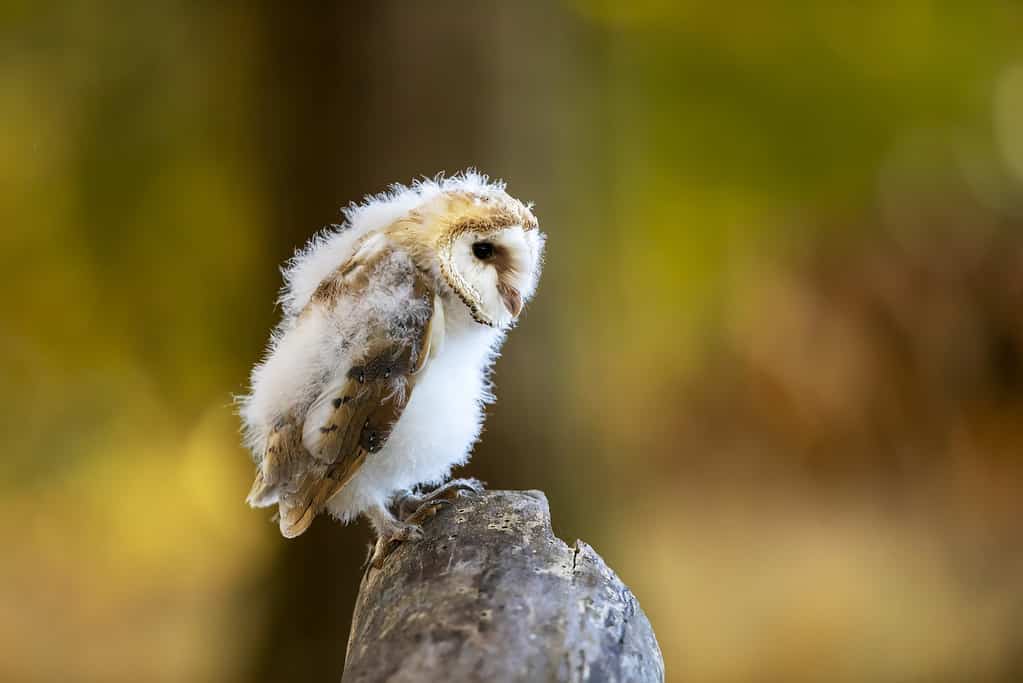
You won’t see a barn owl during the day, but they are active in November at night.
©scigelova/iStock via Getty Images
While the barn owl (Tyto alba) might be more active during the winter, it also is vocally active during November. In spring and summer, owls tend to be quieter and hunt from the air. However, once the colors change on the trees, they become perched hunters, making them more easily seen.
In addition, owls will begin to hoot to protect territory, mate, and signal predators. Despite this, the barn owl is often spotted only at night, as they are nocturnal animals.
#11 Wild Boar

Wild boar
also fatten up to survive the dropping temperatures.
©Martin Mecnarowski/Shutterstock.com
The wild boar (Sus scrofa) is another active animal in November that often scavenges for food. While many are nocturnal, the wild boar will start to search for food to eat. They often look for acorns, beechnuts, fruit, and other plants such as grass, roots, and fungi. Boards are more often seen during November due to less food being available. They will need to scavenge as plants and insects become more scarce during the fall months.
#12 Moose
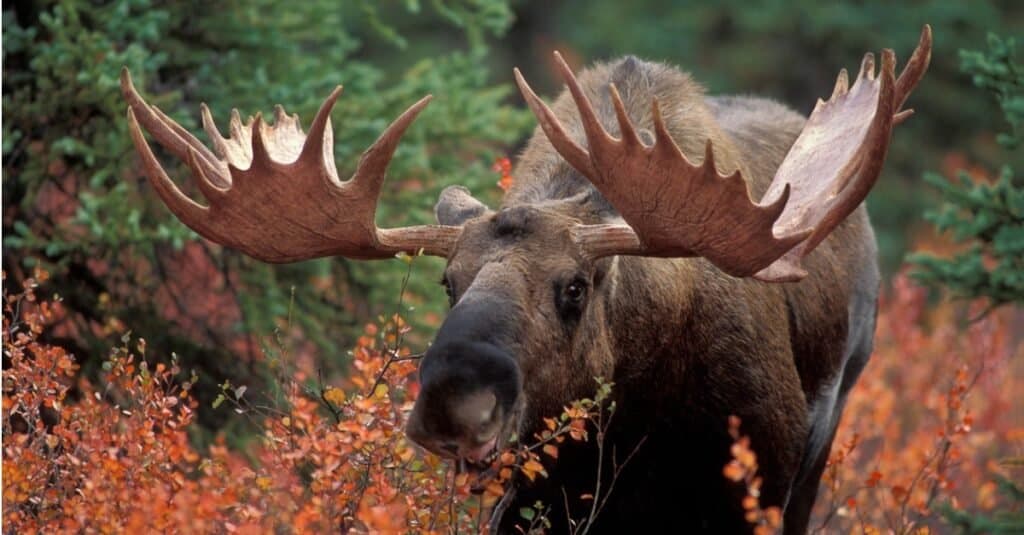
A moose tends to stay near their home and don’t often roam outside of a territory.
©iStock.com/RONSAN4D
Moose are also active during November, as it’s right after the breeding season. A moose will often begin rutting season during late August, and it will last until mid-October. Since most moose don’t move far, they often can still be spotted in November. Their thick winter coat helps them adapt to the cold temperatures, ensuring they remain active.
#13 Raccoons
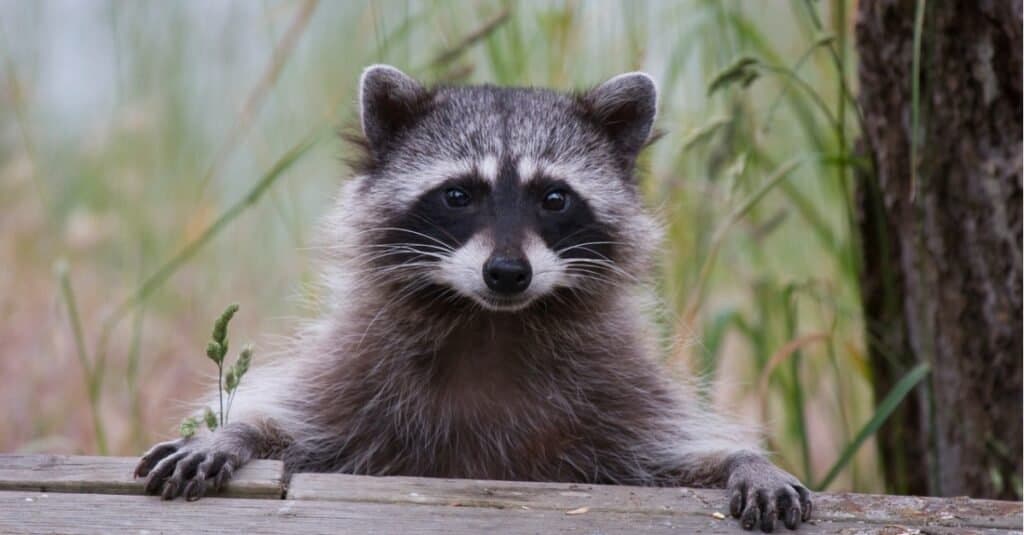
A raccoon will travel anywhere and everywhere to scavenge for food and steal shelter.
©iStock.com/cullenphotos
Raccoons are one of the year-round active animals but are more often seen during the fall. Despite being a critter, the species doesn’t hibernate during the winter. However, they will seek shelter to keep themselves warm during the winter season. They can often be seen hiding in houses, dumpsters, or any place that can protect them from the cold season. Additionally, they tend to steal shelters from animals and instead not build their own den.
#14 Beavers

Shelter is the most important factor to beavers in the fall.
©Holly Kuchera/Shutterstock.com
Beavers are active year-round, particularly during the fall months. They begin to prepare for the winter months by gathering all of the essentials and tending to their dams. During this time, they will actively collect branches, twigs, and remaining shrubs to munch on. Once the waters freeze over, beavers retreat to their dams and stay there until it warms again.
#15 Elk
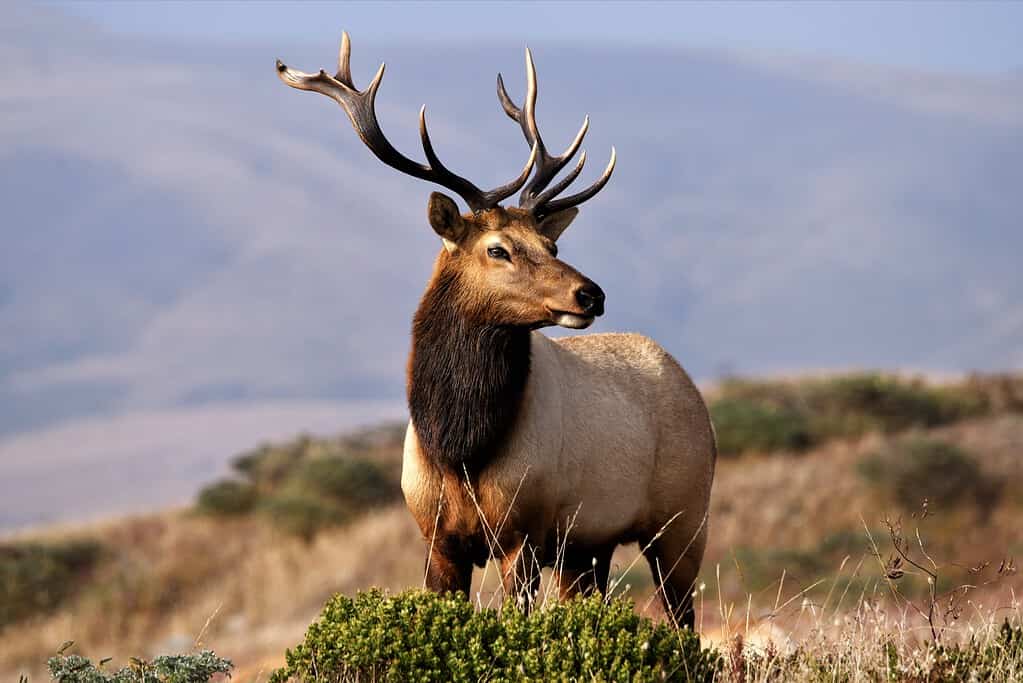
Similarly to moose, elk focuses on roaming after mating season.
©iStock.com/Eric Clark
Elk often aren’t spotted as easily during the first two months of November. During this time, they are transitioning from post-rut to late-season behavior. The elk often drifts alone or in small groups at this time and can be spotted outdoors. In particular, bull elk seem to be the most active during November, often the peak time for hunters.
#16 Flounder

After spawning,
flounder
are drawn to offshore locations.
©Michele Ursi/Shutterstock.com
Flounder (Paralichthys dentatus) tends to spawn in the fall and early winter. During November, it tends to be the spawning season, as female fish lay their eggs and males fertilize them. Flounders move offshore during the beginning of fall and will start to breed. During this migration period, anglers tend to catch them.
#17 Redfish
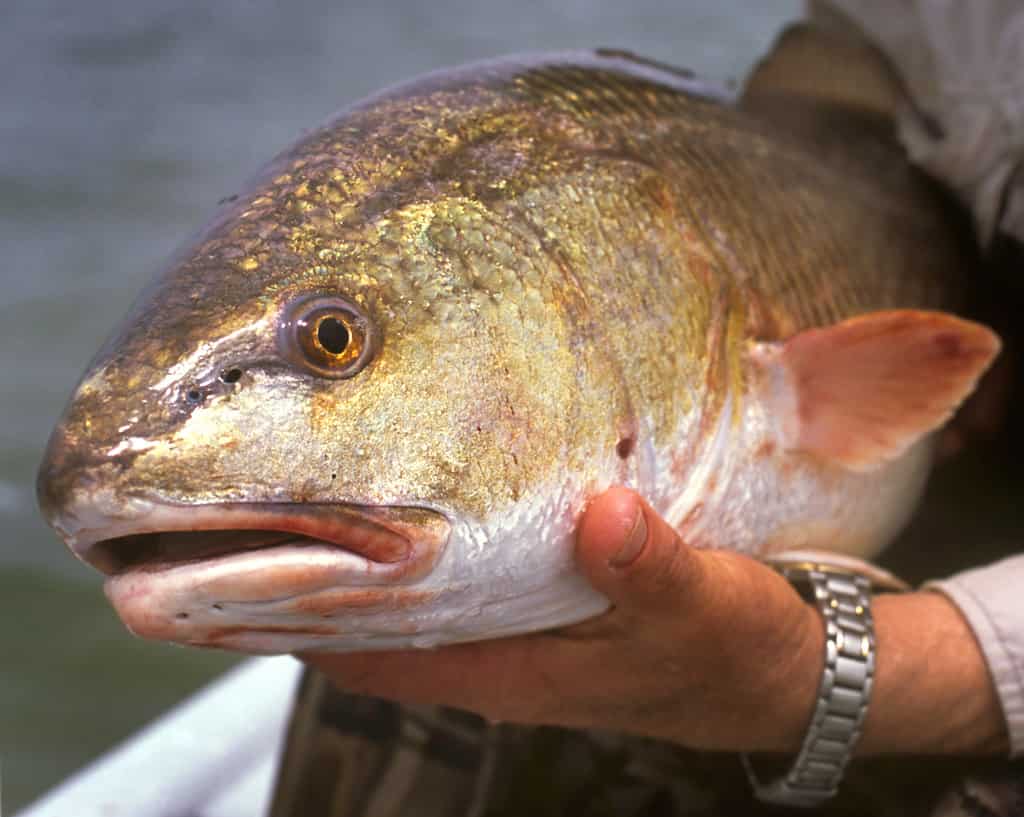
Redfish are active year-round but are most active during November due to spawning season.
©iStock.com/SteveClever
Depending on the area, redfish (Sciaenops ocellatus) are also active during November. Particularly in Florida, Louisiana, and the upper Gulf Coast. The redfish love cooler weather and start moving for migrating baits. However, they are also active year-round.
#18 Trout
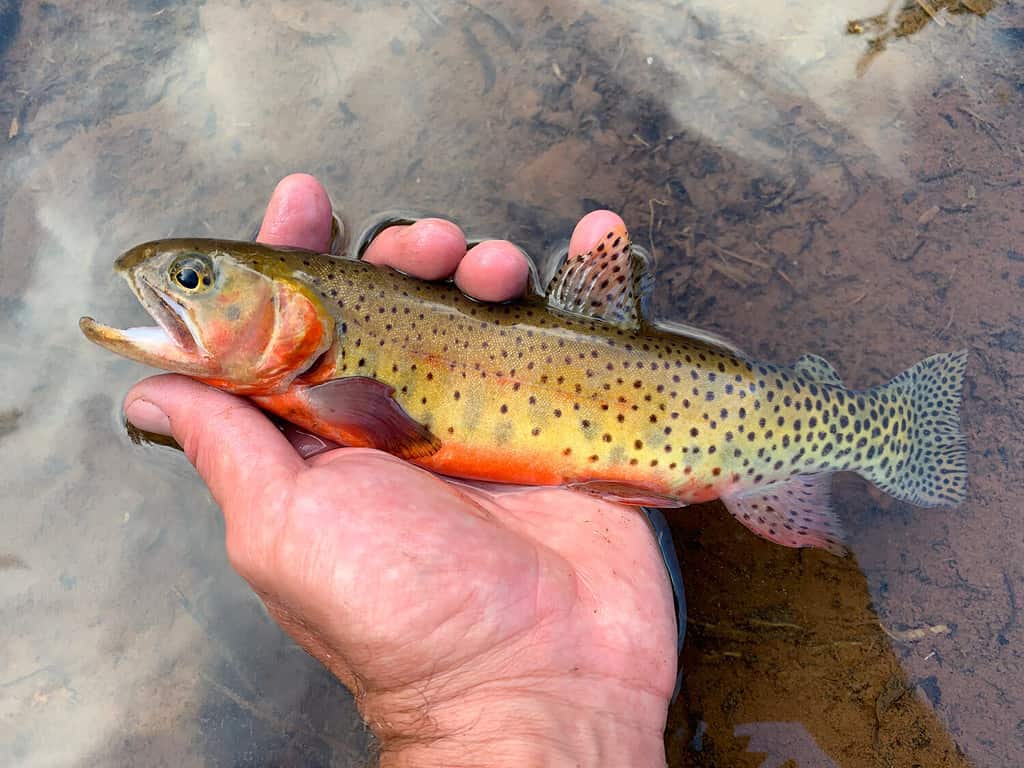
Trouts enjoy cooler temperatures and become more active during November.
©Sean Lema/Shutterstock.com
Multiple types of trout become active during November and the fall months. During this time, the Brown and brook trout prepare for spawning season. On the other hand, rainbow and cutthroat trout begin to become energized by the cooling water temperatures and become more active. Mainly, they inhabit rivers and streams from November until December.
#19 Mullet

Schools of mullets can be found roaming alongside the top of the water.
©KZWW/Shutterstock.com
Mullets (Mugilidae) are particularly active in Florida during October and November. This phenomenon is called the Mullet Run and happens when spawning migration happens. During this time, mullets leave the haunts of Georgia and the Carolinas to head to Florida.
#20 Salmon

Multiple types of salmon species are active during fall, specifically in November.
©Evan Linnell/Shutterstock.com
November is also a time when multiple salmon species are active. From July to November, Chinook salmon are the most active. During this time, these fish species spawn and begin to feed. From August to November, coho and silver salmon are the most active.
#21 Northern Cardinal

Cardinals are often found in pairs but form a flock during fall.
©Bonnie Taylor Barry/Shutterstock.com
Northern cardinals (Cardinalis cardinalis) are often very active in fall, unlike other birds. During the fall months, they form large flocks, including up to a few dozen. Typically, the northern cardinal is territorial and pairs up.
However, during fall and winter, they forego their territorial ways and form giant flocks. The species do this to collectively scavenge and have more success than if they were a smaller group.
#22 Snowy Owls

A snowy owl can be found year-round but becomes more visible during the fall.
©Tambako The Jaguar / CC BY-ND 2.0 DEED – License
Depending on your area, snowy owls (Bubo scandiacus) tend to arrive in mid-November in the Arctic regions. While they might be challenging to spot due to their snowy appearance, they are definitely more active. They can be found hunting outdoors for food and will often perch themselves on buildings and trees.
#23 Dark-Eyed Junco
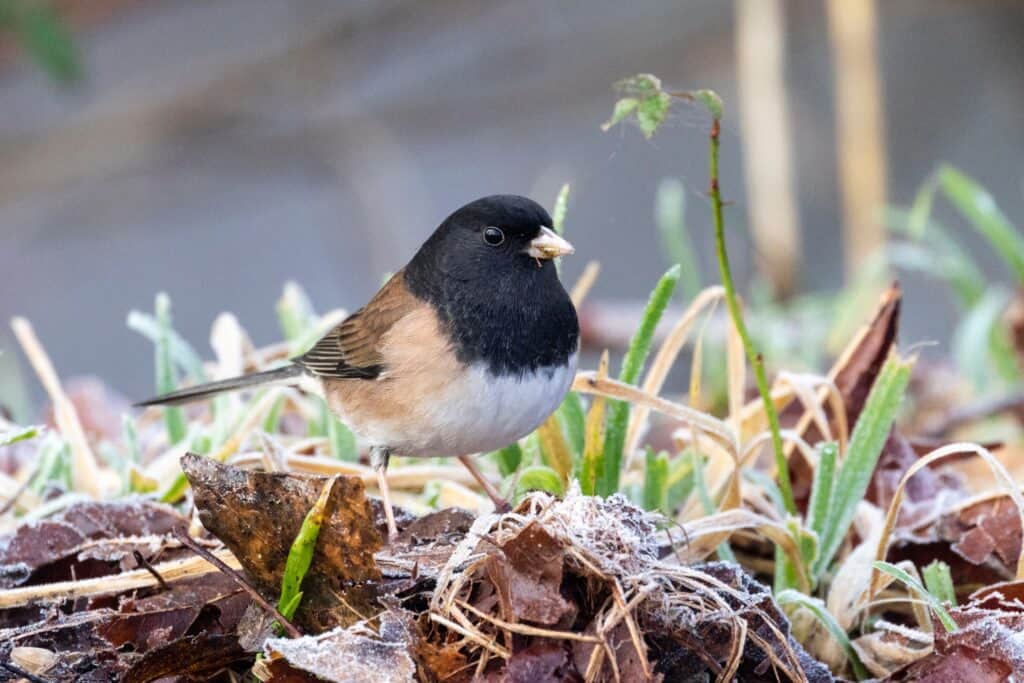
While not found in every region, dark-eyed juncos are very active and easy to spot as they scavenge on the ground for food.
©Feng Yu/Shutterstock.com
Dark-eyed juncos (Junco hyemalis) are active during the fall and are most social during this time. They can be seen foraging for food outdoors on the ground. They tend to hop or walk on the ground instead of flying. Junco’s love eating insects, seeds, and small shrubbery. They can be found in consorts in flocks during fall and winter but are active year-round.
#24 Red-Crowned Cranes

Only found in Japan, the red-crowned cranes are active during November.
©Ondrej Prosicky/Shutterstock.com
The red-crowned crane (Grus japonensis) can be seen from November to March in Japan. At this time of year, the birds leave their breeding territories and can be found in other areas. Once they leave the breeding grounds, they travel together and migrate to warmer climates by mid-December.
#25 Black-Capped Chickadee

Chickadees join other flocks during the winter to help share resources and food.
©Rob Palmer Photography/Shutterstock.com
The black-capped chickadee (Poecile atricapillus) is another bird that becomes more active during the fall and winter. Like the northern cardinal, the black-capped chickadee forms small groups and flocks during the winter to survive. The bigger flock ensures the group finds more food and resources to survive the winter. When spring and summer come, the flock breaks up into pairs and disperses.
#26 White-Breasted Nuthatch
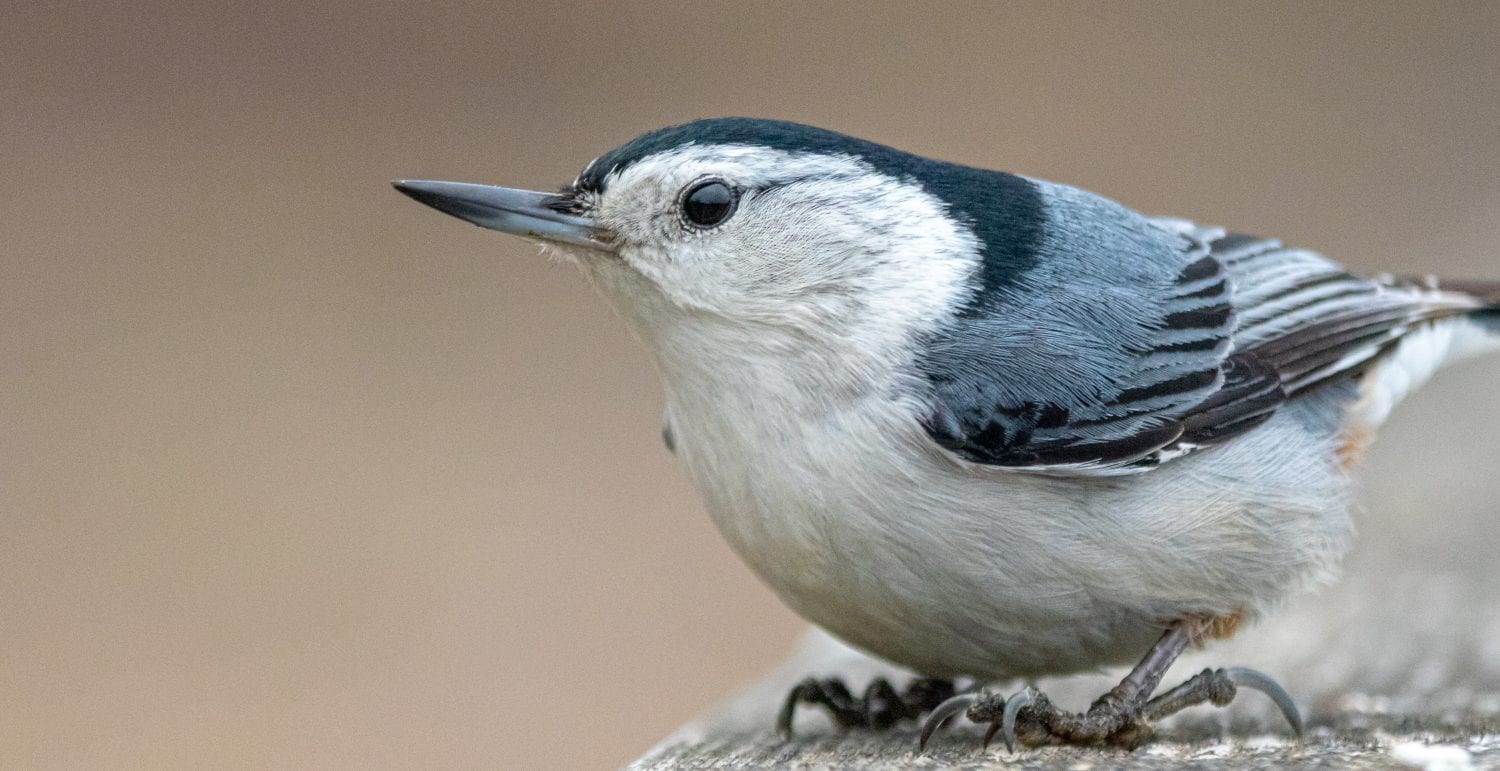
While white-breasted nuthatches are active year-round, they can become more active during fall when they need to forage more food.
©J. A. Mikulich/Shutterstock.com
The white-breasted nuthatch (Sitta carolinensis) is similar to other active birds year-round. The species joins flocks with its close relatives, which include chickadees and titmice. Flocks help the pack forage more food, and the white-breasted nuthatch will do the same to survive. However, they remain in pairs year-round.
#27 American Goldfinch
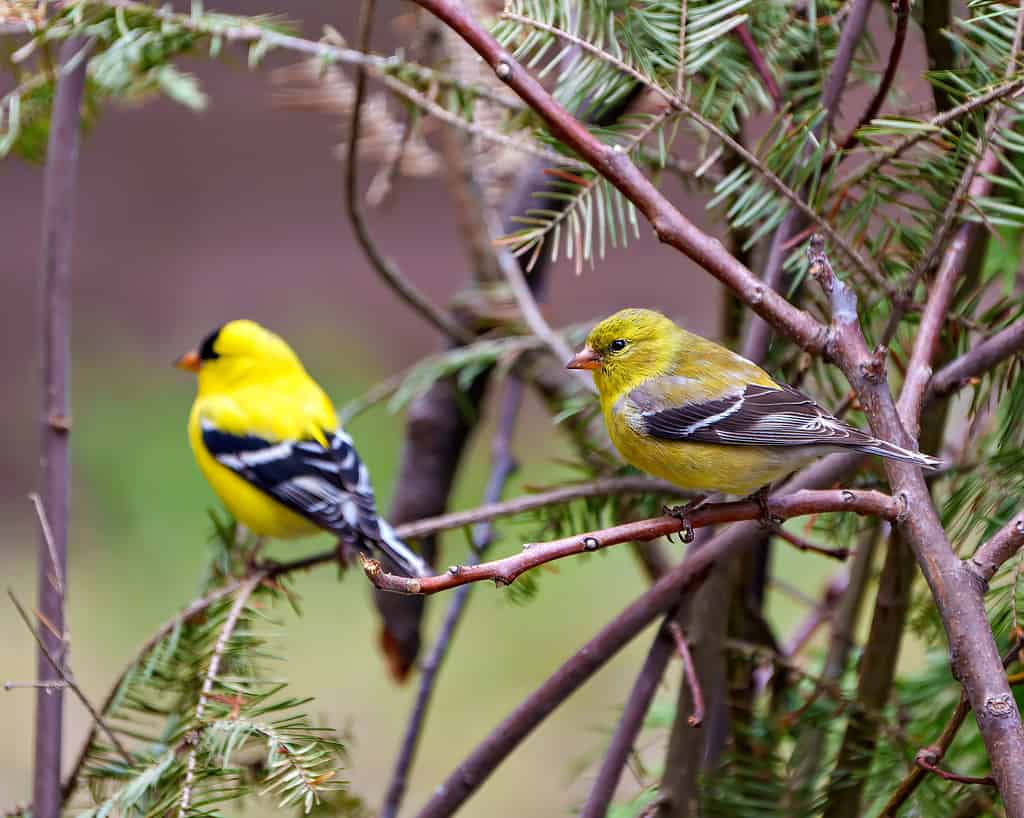
With their bright plumage, the American goldfinch is easy to spot against the autumn colors.
©Rejean Bedard/iStock via Getty Images
The American goldfinch (Spinus tristis) has an irregular migration pattern. Instead, it travels from mid-fall until early spring. This makes them easily spottable during the fall and winter months. During November, the American Goldfinch migrates to the southern United States and northern Mexico.
#28 House Finch
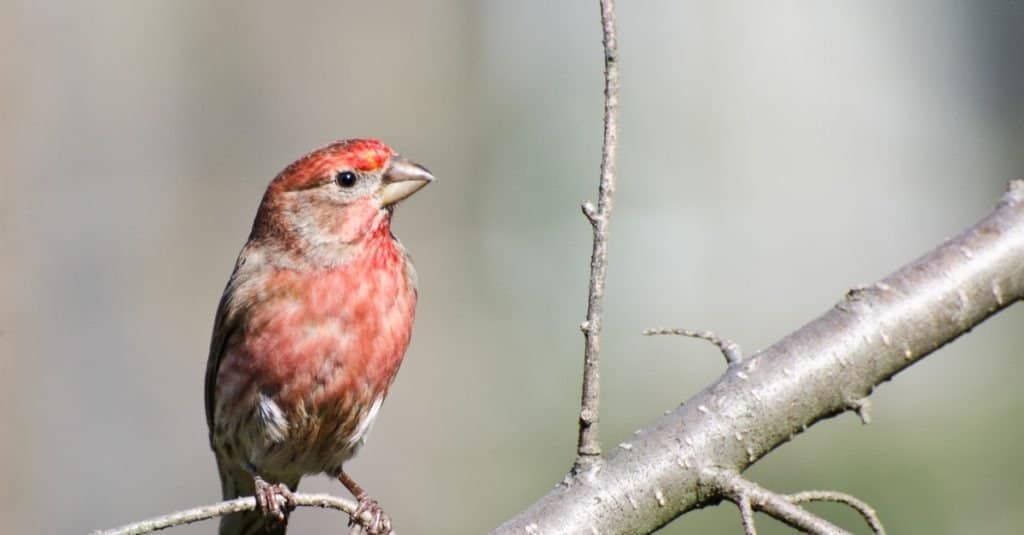
House finches need to scavenge for food as fall makes it difficult to find food.
©rck_953/Shutterstock.com
The house finch (Haemorhous mexicanus) moves from living in higher elevations to lower during the fall months. As the temperature drops, these small scavengers want to be closer to their food source. The species thrives on buds, fruit, seeds, and foliage. During the fall, these resources are sparse, which makes them more active.
#29 Hawks
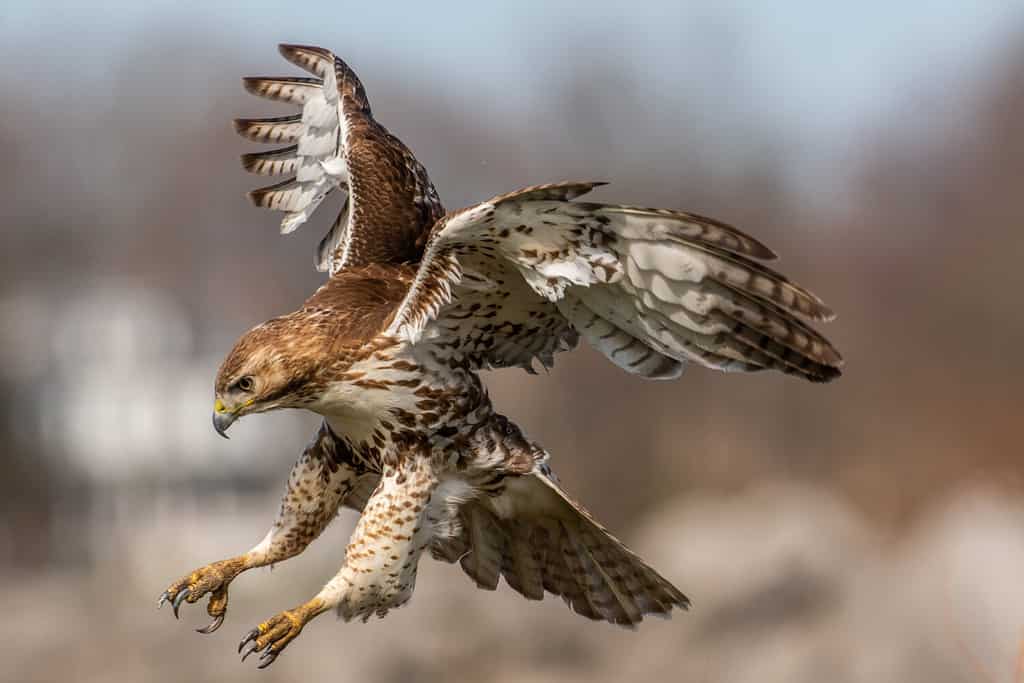
Hawks are often loners but form flocks of up to 1,000 when they migrate.
©David Brace/Shutterstock.com
For hawks, they tend to start to migrate during October but can be found doing so until mid-November. In the south, the red-tailed, Cooper’s, and sharp-shinned hawks can be found flying high in the air. When the species gathers, it can be in flocks of hundreds to thousands at a time, depending on the area. They may also be spotted perching from high places, looking for prey to catch.
#30 Jays
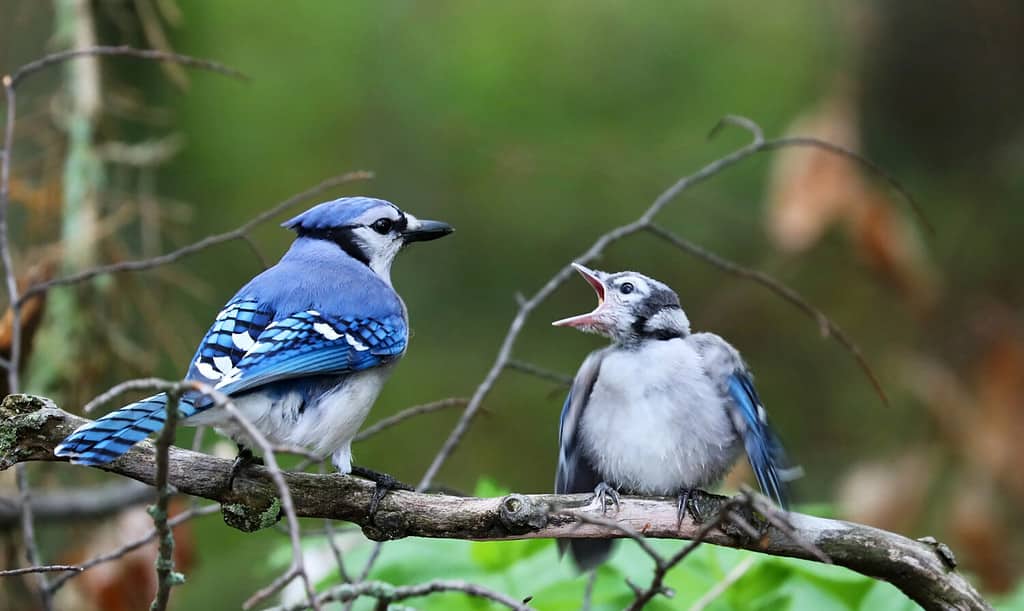
Blue jays are very vocal during the fall season.
©Karel Bock/Shutterstock.com
A handful of jay species tend to be most active during the fall months, especially in November. During this time, jays become more vocal and scream from treetops to communicate. For most of the year, jays often will be in small groups or pairs, but in the fall, they gather together in flocks to migrate to different areas.
Summary of the 30 Most Active Animals in November
| Number | Name |
|---|---|
| #1 | Red Squirrel |
| #2 | Hedgehog |
| #3 | Fox |
| #4 | Great Spotted Woodpecker |
| #5 | Monarch Butterfly |
| #6 | Dormouse |
| #7 | Red Deer |
| #8 | Grey Wolf |
| #9 | Badger |
| #10 | Barn Owl |
| #11 | Wild Boar |
| #12 | Moose |
| #13 | Raccoons |
| #14 | Beavers |
| #15 | Elk |
| #16 | Flounder |
| #17 | Redfish |
| #18 | Trout |
| #19 | Mullet |
| #20 | Salmon |
| #21 | Northern Cardinal |
| #22 | Snowy Owls |
| #23 | Dark-Eyed Junco |
| #24 | Red-Crowned Cranes |
| #25 | Black-Capped Chickadee |
| #26 | White-Breasted Nuthatch |
| #27 | American Goldfinch |
| #28 | House Finch |
| #29 | Hawks |
| #30 | Jays |
The photo featured at the top of this post is © jdross75/Shutterstock.com
Thank you for reading! Have some feedback for us? Contact the AZ Animals editorial team.






